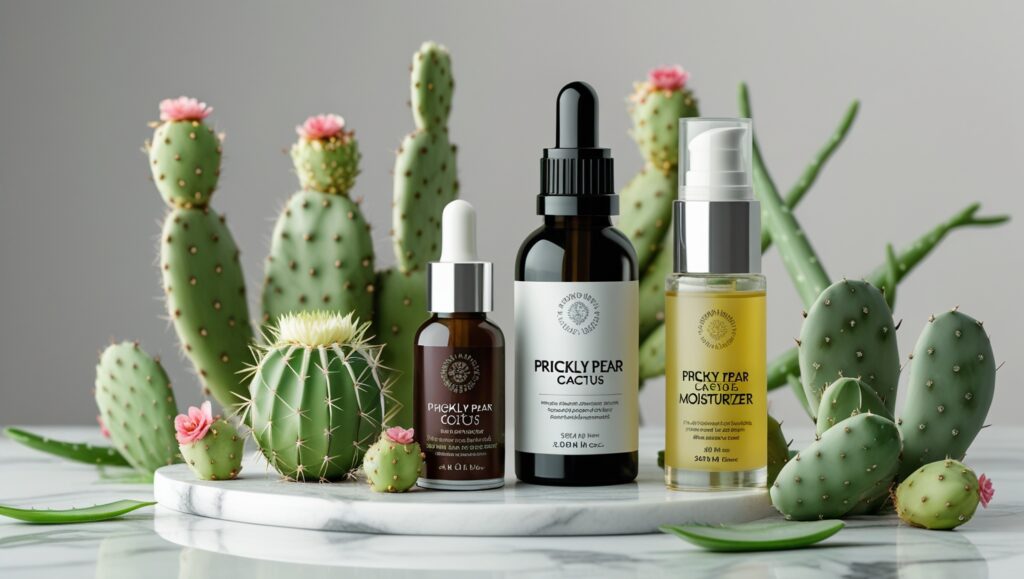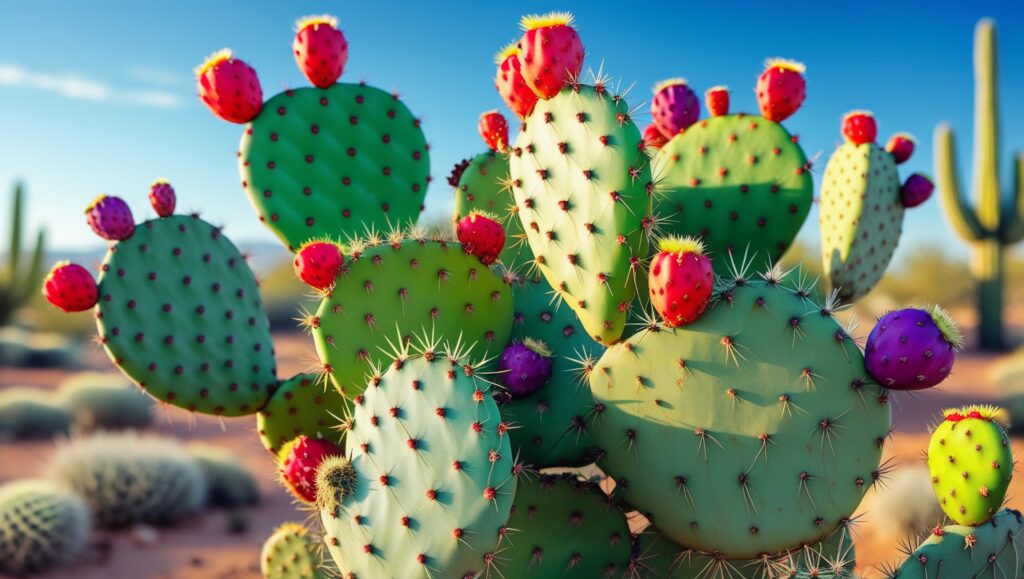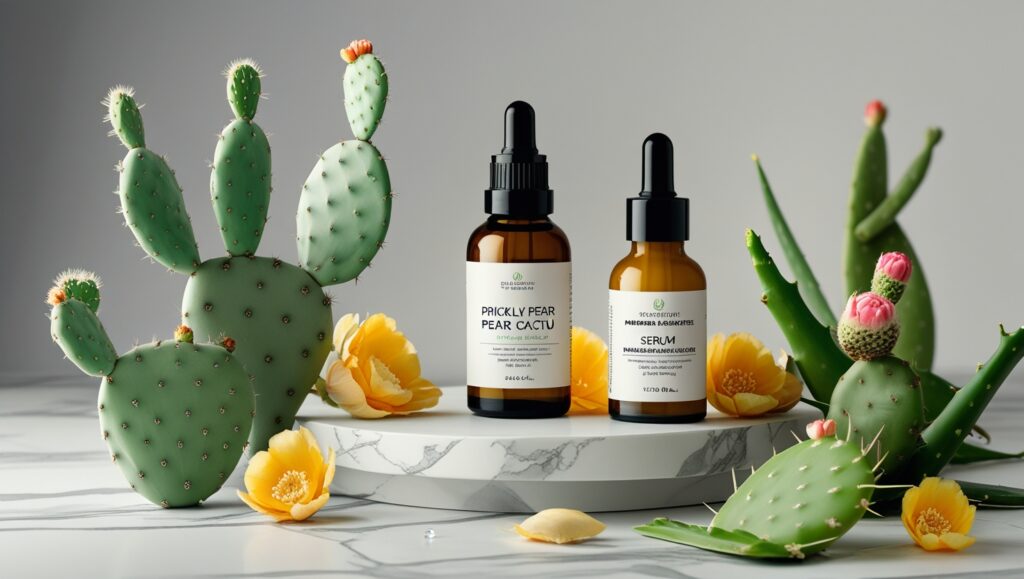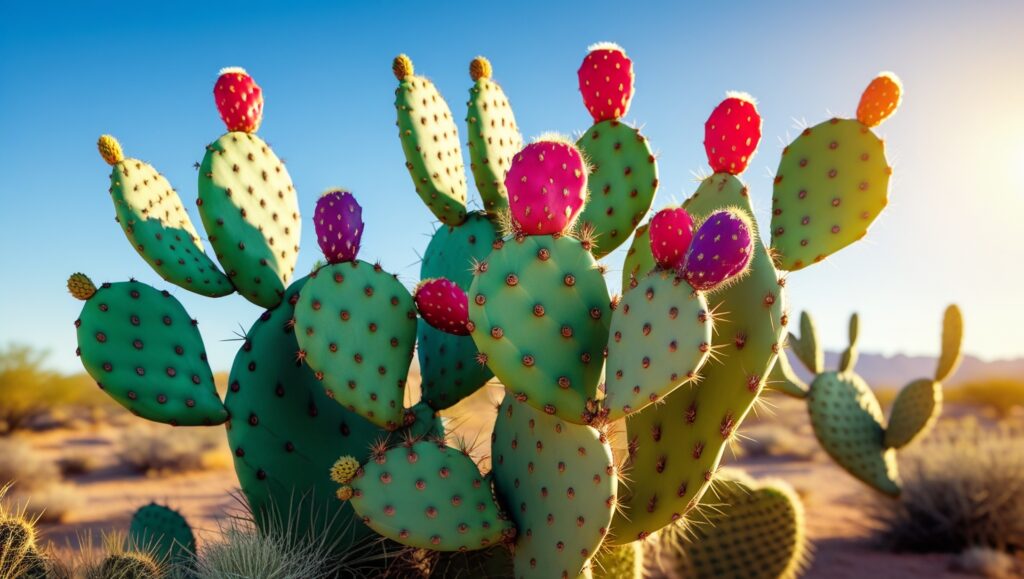The prickly pear cactus, scientifically known as Opuntia, has been treasured for centuries due to its wide range of medicinal benefits. Native to arid regions, this resilient plant is packed with nutrients, antioxidants, and bioactive compounds that promote overall health and wellness. From ancient civilizations to modern-day health enthusiasts, the prickly pear cactus has remained a powerful natural remedy.
Prickly Pear Cactus
In this article, we will explore the healing properties of this remarkable plant and how you can incorporate it into your daily routine to improve your well-being.
1. Nutritional Composition of Prickly Pear Cactus
Prickly pear cactus is a powerhouse of essential nutrients that contribute to various health benefits. It contains:
- Vitamins – Rich in vitamin C, vitamin A, and several B vitamins, which support immunity, skin health, and energy production.
- Minerals – Includes calcium, magnesium, potassium, and iron, essential for bone strength, heart health, and oxygen transport in the body.
- Fiber – High in dietary fiber, aiding digestion and supporting gut health.
- Antioxidants – Loaded with flavonoids, betalains, and polyphenols that help combat oxidative stress and inflammation.
- Essential fatty acids – Found in prickly pear seeds, these fats contribute to heart and brain health.
These nutrients work together to provide a holistic approach to healing and maintaining good health.
2. Prickly Pear Cactus for Digestive Health
One of the primary healing benefits of prickly pear cactus is its ability to support the digestive system. The high fiber content makes it an excellent natural remedy for various digestive issues, including:
- Relieving constipation – The insoluble fiber in prickly pear aids in adding bulk to stool, promoting regular bowel movements.
- Soothing stomach ulcers – Studies suggest that the mucilage present in prickly pear cactus can protect the stomach lining and reduce the risk of ulcers.
- Supporting gut microbiome – The prebiotic nature of the fiber helps promote beneficial gut bacteria, improving overall digestion and immune function.
Incorporating prickly pear into your diet through fresh fruit, juice, or supplements can help maintain a healthy digestive tract and prevent gastrointestinal disorders.
3. The Role of Prickly Pear Cactus in Blood Sugar Control
Prickly pear cactus has been widely studied for its role in regulating blood sugar levels, making it particularly beneficial for individuals with diabetes or insulin resistance. Some of its key benefits include:
- Reducing blood glucose levels – Compounds found in prickly pear have been shown to improve insulin sensitivity and reduce post-meal glucose spikes.
- Enhancing carbohydrate metabolism – The fiber and pectin in the cactus slow down the absorption of sugars, preventing sudden spikes in blood sugar.
- Lowering risk of type 2 diabetes – Regular consumption of prickly pear may help decrease insulin resistance and improve metabolic health.
Traditional medicine has long recommended prickly pear for diabetics, and modern research continues to validate its effectiveness. Drinking prickly pear juice or consuming it as a supplement can be a natural way to support balanced blood sugar levels.
4. Prickly Pear Cactus for Heart Health and Inflammation Reduction
Heart disease remains one of the leading causes of death worldwide, but prickly pear cactus offers protective benefits for cardiovascular health. Its impact on heart health includes:
- Lowering cholesterol levels – Studies indicate that the fiber in prickly pear cactus helps reduce LDL (bad) cholesterol while increasing HDL (good) cholesterol.
- Reducing blood pressure – The high potassium content helps regulate blood pressure and prevent hypertension.
- Anti-inflammatory properties – Chronic inflammation is a major contributor to heart disease. Prickly pear’s antioxidants and anti-inflammatory compounds help reduce inflammation and protect blood vessels.
By incorporating prickly pear cactus into your diet, whether through fresh fruit, tea, or capsules, you can support a healthy heart and reduce the risk of cardiovascular diseases.
5. Prickly Pear Cactus for Skin Health and Anti-Aging
Beyond its internal health benefits, prickly pear cactus is a powerful ingredient in skincare. Due to its high antioxidant content, essential fatty acids, and hydrating properties, it provides several benefits for the skin:
- Hydrates and nourishes – Prickly pear seed oil is rich in linoleic acid and vitamin E, making it deeply moisturizing.
- Fights signs of aging – The antioxidants in the cactus help protect skin cells from oxidative damage, reducing fine lines and wrinkles.
- Soothes sensitive and acne-prone skin – The anti-inflammatory properties help calm redness, irritation, and breakouts.
- Promotes wound healing – Traditionally used to treat cuts, burns, and insect bites, prickly pear speeds up the healing process and reduces scarring.
Many skincare brands now include prickly pear cactus extracts in their products due to its proven benefits. Using prickly pear-based creams, serums, or even DIY masks can improve skin health naturally.
Final Thoughts
Prickly pear cactus is a versatile and powerful plant with a wide range of healing benefits. Whether consumed for digestive support, blood sugar control, heart health, or applied topically for glowing skin, this nutrient-dense superfood is a natural way to boost overall well-being.
By incorporating prickly pear cactus into your diet or skincare routine, you can harness its healing powers and enjoy a healthier, more vibrant life. Consider adding it to smoothies, salads, herbal teas, or even using its oil for topical applications to experience its full benefits.
Nature has always provided us with powerful remedies, and prickly pear cactus is a true testament to the healing potential of plants. Start exploring its benefits today and take a step toward natural wellness!








